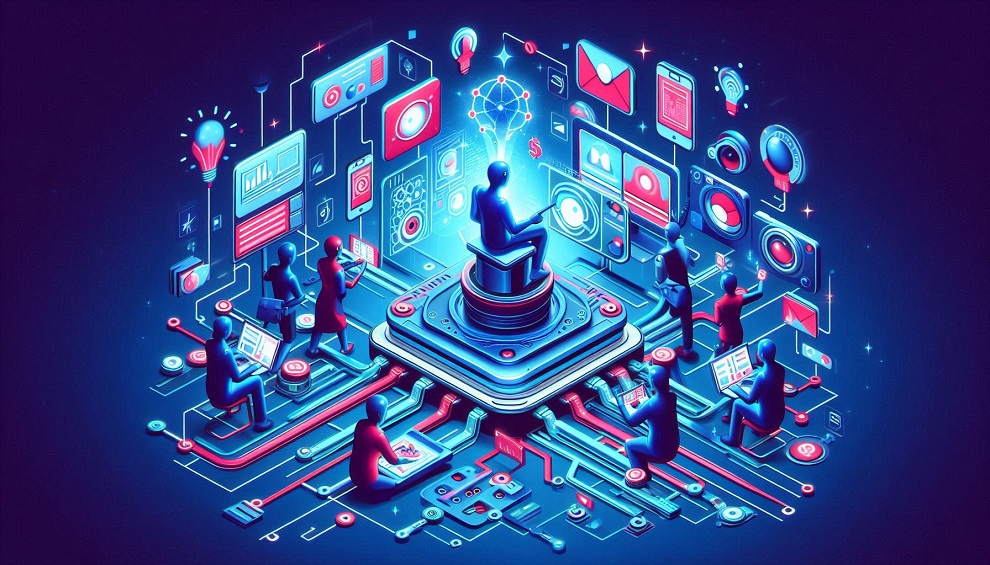By: Tony van den Berge, VP, EMEA at Cloudflare
The market for AI-generated music and audiovisual (AV) content is set to skyrocket in the next couple of years, growing from around €3 billion today to €64 billion in 2028. While this may be good news for those dancing to Gen AI’s tune, it’s likely to hit a bum note for content creators.
Despite providing the “creative fuel of the Gen AI content market,” these human creators could be about to see their income drop by around a quarter.
That amounts to a cumulative loss of €22 billion over the next five years – €10 billion in music and €12 billion in audiovisual – according to a new report commissioned by the International Confederation of Societies of Authors and Composers (CISAC), which represents some five million people in the creative industries.
The report – Study on the economic impact of Generative AI in the Music and Audiovisual industries – is touted as the first-ever global study of its kind to tackle the subject.
It warns that unless this situation changes, content creators will be squeezed on two fronts: the loss of revenues because of the unauthorised use of their works by Gen AI models, and the loss of income from people buying AI-generated content.
“For creators of all kinds, from songwriters to film directors, screenwriters to film composers, AI has the power to unlock new and exciting opportunities – but we have to accept that, if badly regulated, generative AI also has the power to cause great damage to human creators, to their careers and livelihoods,” said CISAC President and ABBA frontman Björn Ulvaeus.
“Which of these two scenarios will be the outcome? This will be determined in large part by the choices made by policy makers, in legislative reviews that are going on across the world right now. It’s critical that we get these regulations right, protect creators’ rights and help develop an AI environment that safeguards human creativity and culture,” he said.
Content creators face an existential threat
While there is clearly a role for legislation, technology can also help provide a solution not only to protect content from Gen AI creators, but also to provide an avenue to monetise it.
With so much content online – everything from those who make a living from art and animation to filmmakers and wordsmiths – it’s a problem that extends far beyond the music industry.
In most cases, site owners have had little control over how AI services use their content for training or other purposes. Recently, though, new tools have been developed that make it easier for site owners, creators, and publishers to take back control of their content.
Cloudflare empowers creators with tools to safeguard and monetise their content
At Cloudflare, we are uniquely positioned to address these challenges by leveraging our global network to create innovative solutions. Our recently introduced AI Audit tools empower creators and site owners to regain control over their content in the age of generative AI. These tools allow creators to monitor AI bot activity, identifying which AI services are accessing their content, how often, and what specific material is being targeted. With one-click solutions, creators can block unauthorised AI crawlers, ensuring only approved entities can use their work. Beyond protection, Cloudflare helps them monetise their content by giving them analytics and control over who can scan based on the licensing agreements they sign with model providers.
To understand how these new tools fit into the bigger picture, it’s worth stepping back to see how AI models are accessing digital content in the first place. Bots typically “crawl” the internet looking for material. “Good bots” – such as search engine crawlers – are beneficial because they help people discover sites and drive traffic. “Bad bots,” on the other hand, can pose a security threat.
But the rise of Large Language Models (LLMs) and other generative tools has created a murkier third category. Unlike malicious bots, some of the crawlers associated with Gen AI platforms are simply looking to hoover up content to train new LLMs. And that’s precisely the problem for content creators.
New tools are key in battle to monetize content
That’s why there’s so much interest around the development of these solutions. Not only do they allow content providers to identify who – or what – is scraping their content, they also allow them to block access to particular bots.
The result is two-fold. First, content creators are able to stop scrapers from accessing their intellectual property. Second, it allows content creators to negotiate access deals directly with AI companies. In other words, it gives content creators the chance to be paid for their output.
In a sign that the balance of power may already be shifting in terms of control and ownership, many of those contracts include terms about the frequency of scanning and the type of content that can be accessed.
That said, it’s still early days. There is still some uncertainty about the value of content used this way, and standardization discussions on enforceable mechanisms to express AI crawling preferences are still ongoing. Meanwhile, site owners are at a disadvantage while they play catch-up. But unless – and until – there is a resolution, content creators and site owners will be discouraged from launching or maintaining Internet properties.
The fear is that more and more creators will stash their content behind paywalls, which may solve one problem but could invariably lead to others. Ultimately, all parties – policymakers, tech companies, and creators – need to come together to enable AI innovation to thrive while safeguarding creativity. For those in the music industry, it’s not just a question of harmony, but of hitting the right notes too.












